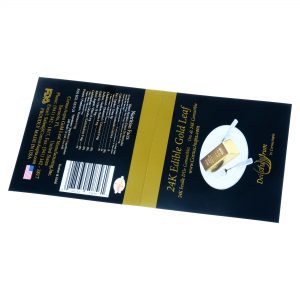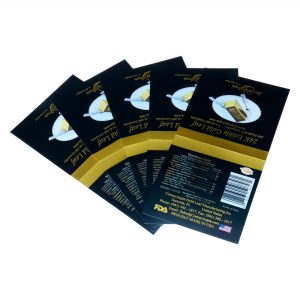Exquisite packaging is also inseparable from packaging and printing. Packaging and printing are important means and ways to increase the added value of goods, enhance their competitiveness, and open up markets. Designers should understand the necessary knowledge of packaging and printing technology to make the design of packaging works more functional and beautiful.
Printing process
Before the packaging is formed, it needs to go through a series of orderly printing work:
Pre-press design and production → print sample → output film film → put large plates according to the size of the printing machine → print PS plate → print on the machine
In order to improve printing quality and production efficiency, before printing, you should pay attention to check whether the design draft has redundant content; whether the text and lines are complete; check whether the registration line, color code, and various printing and cutting lines are complete. Only in this way can the production efficiency be improved and the smooth completion of printing can be ensured. There are many printing processes for paper packaging. Here are a few commonly used printing processes:
(1) Bronzing process
The hot stamping process is performed by heating the desired hot stamping or silver pattern into a relief plate, and then placing aluminum foil paper of the desired color on the printed matter, and after pressure, the aluminum foil is attached to the printed matter.
Tips: There are many kinds of bronzing paper materials, including gold, silver, laser gold, laser silver, black, red, green and so on.
(2) Laminating process
The laminating process is a surface processing technology after printing, which refers to a product processing technology formed by covering a layer of transparent plastic film on the surface of the printed product with a laminating machine.
Tips: The surface of the printed matter after the film will be smoother, brighter, stain-resistant, water-resistant, and abrasion-resistant.
(3) Bump embossing process
This process uses the greater pressure of a letterpress printing machine to roll the partial patterns or texts on the semi-finished products that have already been printed into images with obvious concavities and convexities and a three-dimensional effect.
Note: The embossing process is mostly used in the post-processing of printed matter and paper containers. In addition to packaging cartons, it is also used in the printing of bottle labels, trademarks, book bindings, calendars, greeting cards and other products.
(4) UV anti-metal etching printing process
UV anti-metal etching printing, also known as matte or sand printing, is to print a layer of uneven translucent ink on the substrate with metallic mirror gloss (such as gold and silver cardboard), and then cure it with ultraviolet light (UV) , To produce the effect similar to the bright metal surface after etching or frosting.
Note: UV anti-metal etching ink can produce suede and matt effects, which can make the printed matter appear soft and solemn, elegant and luxurious.
In addition to the several printing processes introduced above, the paper packaging printing process also includes printing processes such as refraction, die-cutting and indentation, water thermal transfer, plastic dripping, ice, scratching and silver.








